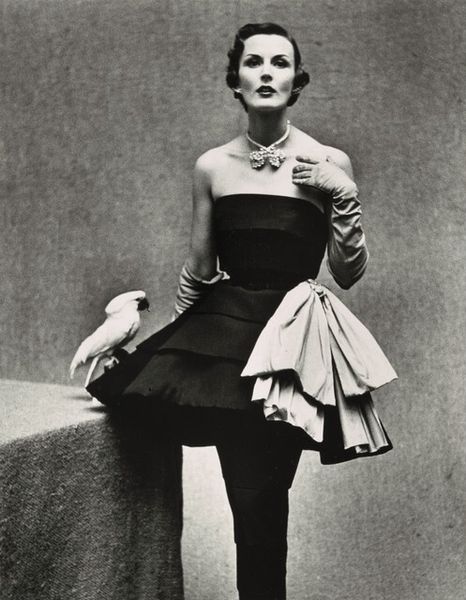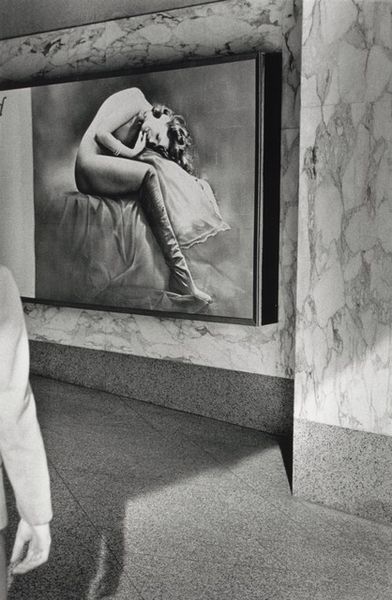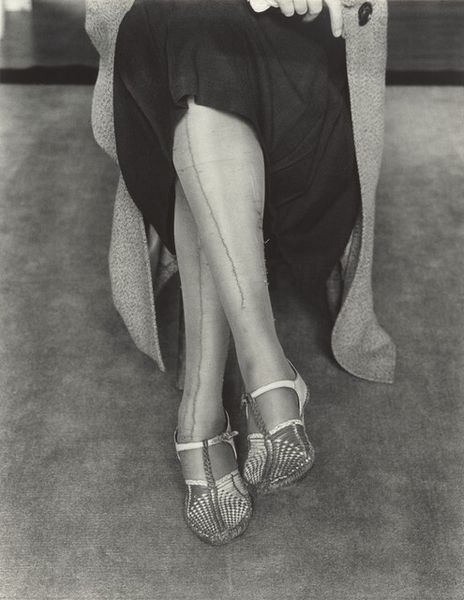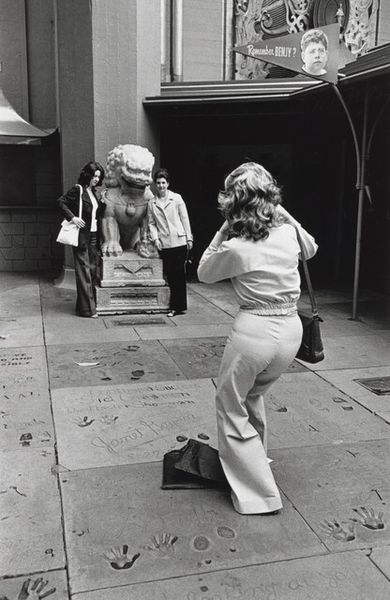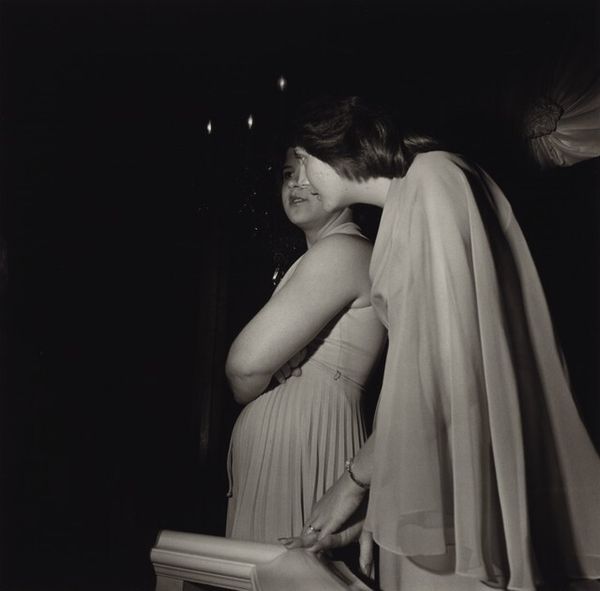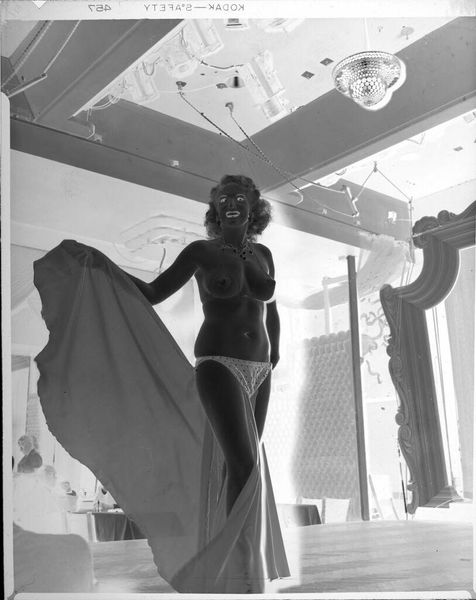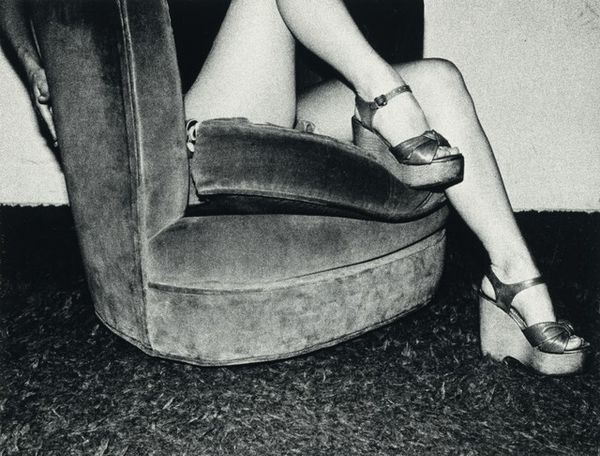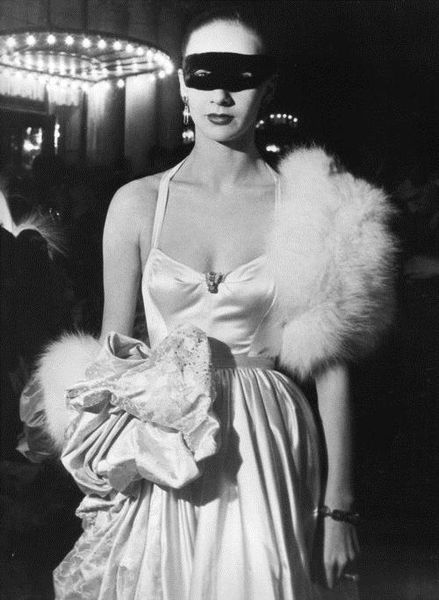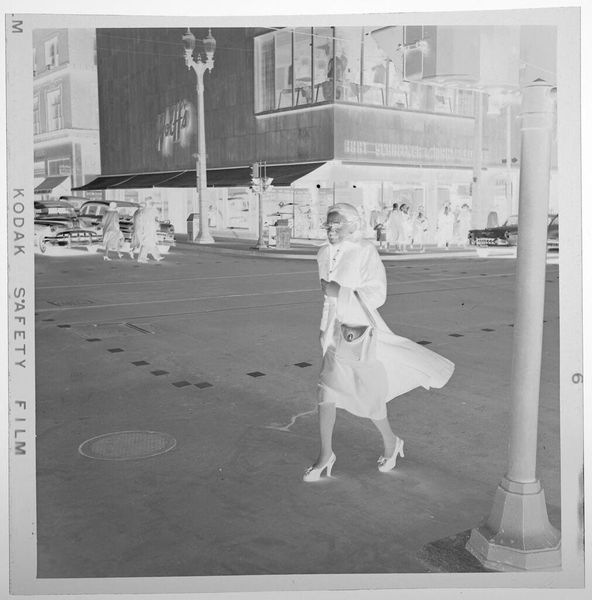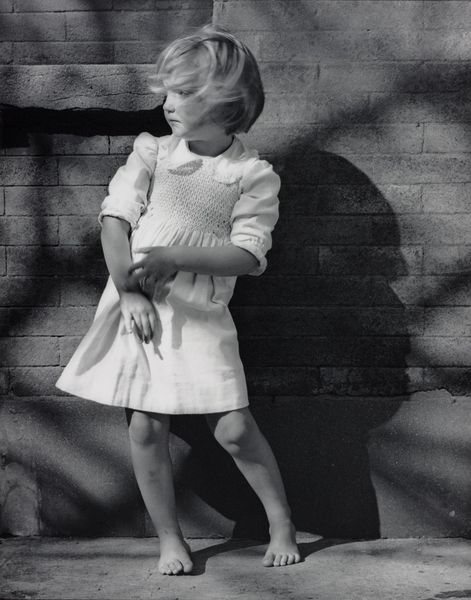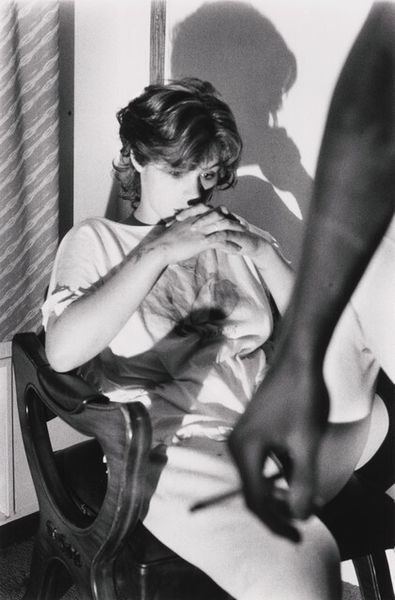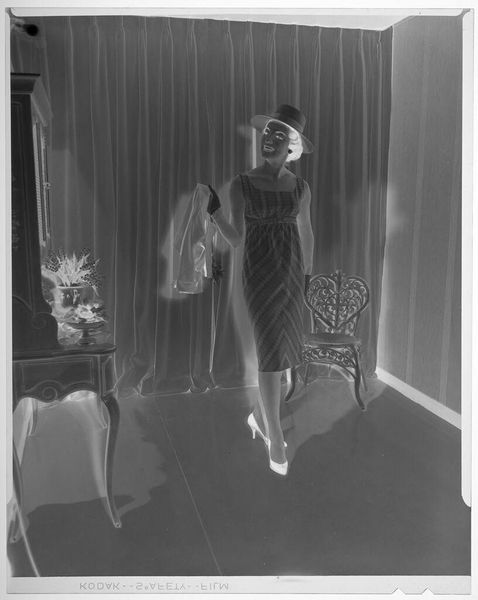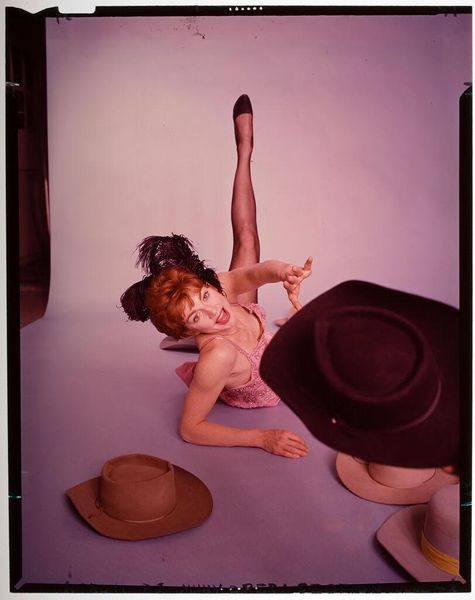
Marilyn Monroe, "Seven Year Itch" Set, New York City Possibly 1955 - 1983
0:00
0:00
photography, gelatin-silver-print
#
portrait
#
black and white photography
#
street-photography
#
photography
#
black and white
#
gelatin-silver-print
#
monochrome photography
#
nude
#
modernism
Dimensions: image: 46.7 x 31.3 cm (18 3/8 x 12 5/16 in.) sheet: 50.5 x 40.7 cm (19 7/8 x 16 in.)
Copyright: National Gallery of Art: CC0 1.0
Editor: This is Garry Winogrand’s black and white photograph of Marilyn Monroe, likely captured sometime between 1955 and 1983, during the filming of "The Seven Year Itch" in New York. The energy in this photograph is just amazing – the dress billowing, her joyous expression. It's like a captured moment of pure, unadulterated Hollywood spectacle unleashed onto the everyday street. What cultural currents do you think Winogrand was tapping into here? Curator: An excellent point about spectacle. Winogrand, like many photographers of his era, was acutely aware of the increasing dominance of visual culture. Consider the period: post-war America, the rise of mass media, and celebrity culture exploding. He is less interested in capturing the perfect, posed publicity shot and more interested in how these iconic figures existed within the wider social landscape. Editor: So it's not just about Marilyn, but about what she represents in that context? Curator: Precisely. Winogrand is examining the creation and consumption of celebrity imagery. The way he places Monroe amidst the urban grit challenges the polished, idealized images that were typically circulated. How does the rawness of the street and the candid capture alter our understanding of her constructed persona? Editor: It definitely brings a sense of humanity, a real-world grounding, to this otherwise almost mythical figure. But is Winogrand critiquing or celebrating this spectacle? Curator: That's the fascinating ambiguity of Winogrand’s work. He neither overtly glorifies nor condemns. He presents. The image exists as a historical document of its time, laying bare the symbiotic relationship between Hollywood, its stars, and the consuming public. He seems interested in examining what Roland Barthes described as "mythologies" created by our societies. Editor: It’s interesting to think about photography not just as a medium to represent someone but as a historical document of an intersection between the industry, the figure, and the public that made it relevant at the time. It seems so simple, but actually encapsulates so much complexity about how celebrity culture shapes us. Curator: Indeed, thinking about images as cultural texts embedded with social and political meanings is crucial. It's a useful method for almost any artwork.
Comments
No comments
Be the first to comment and join the conversation on the ultimate creative platform.
